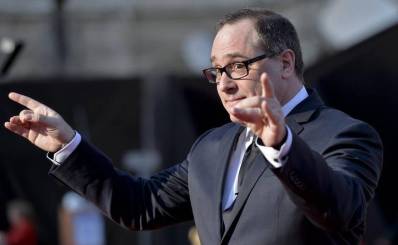
|
«I wanted to write a score that could have been written and performed in 1966» Hi, Mr. Kraemer, thank you for answering BsoSpirit.com about your score for Mission: Impossible – Rogue Nation No problem, my pleasure.
What were your instincts when you were attached to the project to start the composition? Was Lalo Schifrin inmortal legacy for the franchise always in mind to pay hommage (The Mission: Impossible Theme, The Plot…) to the saga and start from there to structure the score?
How did you develop the thematic structure of the composition? Did you elaborate the different themes firstly, Solomon Lane & The Syndicate Theme, the IMF theme, Ilsa’s Theme…? Or you began with the action sequences letting the inspiration flowed while working?
Ilsa actually has a few themes associated with her character. First is an action theme in 7/8, second is a theme in 4/4 that outlines a diminished chord. Finally, a quote from Puccini’s “Nessun Dorma” is used. -Was the ‘Nessum Dorma’ idea to be attached to the professional relationship between Ethan and Ilsa always in mind from the very beginning? We listen the melody from Turandot the first time we see Ilsa with Ethan in a room, and then it is like fate to have the theme developed through the score from the Vienna scene until the end, like tying together both characters in a musical arc.
After your previous collaborations with Christopher McQuarrie for The Way of The Gun or Jack Reacher, we can say every project has a quite different approach, but all of them have a classicism and a basic organic and orchestral approach that make them unique. With the years passing by, they are fresher and fresher nowadays. What has been the differences in your process with Mr. McQuarrie from your first film together to Jack Reacher and now M:I RN?
The biggest challenge was the action music. McQ has never really scored action scenes in his movies before, so that took some time for him to get used to. As he says, he cuts the movie without temp music, and is happy to let many scenes play without score. It was really Tom, as producer, who pushed for more music in the film. But there are still two major action sequences in the film without music, and that’s a very unique thing in this day and age, and I commend Christopher for pulling it off! The adrenalinic, passionate, melodic and completely symphonic action sequences are quite addictive I must say, plenty of thrills and emotion all the way, were particularly difficult to adequate the music to the editing in this film? Focusing specially in two long sequences like the Vienna attack, and the description of the complete operation in Morocco, with that outstanding chase sequence, where you took a bold choice not scoring a part of it letting the audience breathe to impress them later even more.
The Morocco sequence you mention starts with a piece which I called “The Plan” on the soundtrack album in homage to Lalo’s “The Plot”. It’s one of those bits that I consider to be “utilitarian” scoring – it’s not the kind of music most people notice when they’re watching the film, it’s more subliminal. Once the actual infiltration of the Torus commences, I adopted a persistant, rhythmic style of music that was designed to feel like synthesizer music, without using a synthesizer. That music plays until Ethan enters the underwater tank. I actually wrote music that played all the way through the whole scene, but I knew McQ was hoping to play the underwater stuff with only sound effects. My score was just in case he changed his mind. Leaving the car chase to be sound-effects only, no music, was our hope from the beginning. We had been so happy with the final result of doing that in Reacher, that we hoped we’d get away with it here too. To end this mission, we must say that the finale of the film with the theme of the IMF clashing beautifully with The Syndicate Theme is gorgeous and the ultimate rendition to the Lalo Schifrin classic tune after you revisit Ilsa’s melody in Finale and Curtain Call is stunning.
Thank you so much for kindly accepted the BSOSpirit Mission, Mr. Kraemer, it has been an honor and delightful to talk with you about the film. Thank you! My pleasure. |
Author
BIO: Born in New York State and raised in Albany, Joe Kraemer grew up in a musical family. His dad and uncle often sang and played music non-professionally. Kraemer picked up an ear for music and began accordingly taking piano lessons. While in junior high, he met filmmaker Scott Storm, who cast him in a Super 8 film project for which he also wrote the music. He later attended Berklee School of Music in Boston. Through Storm, he later met Bryan Singer and Christopher McQuarrie and these meetings led to him getting work as a film music editor, then eventually as a film music composer. Joe Kraemer most notorious film music works are The Way of the Gun (2000), Jack Reacher (2012), Mission: Impossible Rogue Nation (2015), or the TV Show Femme Fatales (2011).
Joe Kraemer website: |


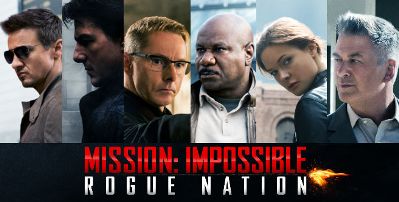
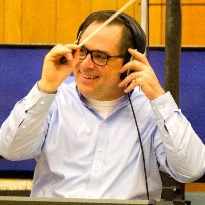 When I was first hired, I had a quick discussion with Christopher McQuarrie and Tom Cruise about the general direction they wanted to take the franchise, and in turn, the music. Their message was “Go retro.” Tom also wanted a lot of percussion. I decided I wanted to go back to the roots of the show and look at what Lalo did originally in 1966 when the TV series began. Christopher agreed that we were not necessarily making a tonal sequel to the first four films, but rather making the best-ever episode of the TV show, in spirit. So once I was hired, I decided I’d stay away from the scores Danny, Hans and Michael wrote for MI 1-4 and instead focused on the TV scores. That was when I decided I wanted to write a score that could have been written and performed in 1966, which meant no synthesizers, no drum machines or techno loops. The final score is one-hundred percent acoustic instruments in a symphonic setting.
When I was first hired, I had a quick discussion with Christopher McQuarrie and Tom Cruise about the general direction they wanted to take the franchise, and in turn, the music. Their message was “Go retro.” Tom also wanted a lot of percussion. I decided I wanted to go back to the roots of the show and look at what Lalo did originally in 1966 when the TV series began. Christopher agreed that we were not necessarily making a tonal sequel to the first four films, but rather making the best-ever episode of the TV show, in spirit. So once I was hired, I decided I’d stay away from the scores Danny, Hans and Michael wrote for MI 1-4 and instead focused on the TV scores. That was when I decided I wanted to write a score that could have been written and performed in 1966, which meant no synthesizers, no drum machines or techno loops. The final score is one-hundred percent acoustic instruments in a symphonic setting.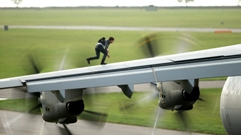 My first step was to really study the composition and arranging of Lalo’s main theme. I broke it down into three principal elements (the vamp, the A theme and the B theme). Then I wrote a new arrangement of the main theme for the marketing campaign using those three elements in different ways. I also made a more traditional arrangement of the theme as well. Next, I studied a secondary theme from the TV show called “The Plot” which Christopher was very interested in including in the score. I did all this work while they were still filming the movie. Once shooting wrapped and I was able to see the first five reels of the picture, I set about writing a theme for Solomon Lane and The Syndicate, which were linked in my mind. I felt that, like Darth Vader’s Theme in Empire Strikes Back, this theme would be a major component in my score.
My first step was to really study the composition and arranging of Lalo’s main theme. I broke it down into three principal elements (the vamp, the A theme and the B theme). Then I wrote a new arrangement of the main theme for the marketing campaign using those three elements in different ways. I also made a more traditional arrangement of the theme as well. Next, I studied a secondary theme from the TV show called “The Plot” which Christopher was very interested in including in the score. I did all this work while they were still filming the movie. Once shooting wrapped and I was able to see the first five reels of the picture, I set about writing a theme for Solomon Lane and The Syndicate, which were linked in my mind. I felt that, like Darth Vader’s Theme in Empire Strikes Back, this theme would be a major component in my score.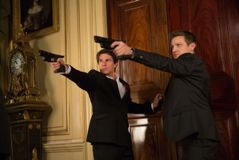 I also constructed a theme for the IMF, which essentially became Brandt’s theme. This melody has a darker quality as this IMF is in bad shape in this film. Sometimes this melody would turn into the Mission Impossible theme, something I was very fond of doing. You can hear that happen when Brandt calls Hunley late in the movie.
I also constructed a theme for the IMF, which essentially became Brandt’s theme. This melody has a darker quality as this IMF is in bad shape in this film. Sometimes this melody would turn into the Mission Impossible theme, something I was very fond of doing. You can hear that happen when Brandt calls Hunley late in the movie. The use of Turandot in the opera sequence was there before I came on the project. It was my instinct to try and incorporate it into the score in some fashion so that it didn’t feel shoehorned into the movie, but rather worked as an organic part of the whole thing. And since the moment where Ethan spies Ilsa back stage is supported by the music diagetically, I decided to bring it back in act 2 when she talks about running away with Ethan and leaving all this behind. That led to a third opportunity to use it when they say goodbye at the end of the film. These three moments formed a nice through line, so I went back and sprinkled allusions to it throughout the rest of the score.
The use of Turandot in the opera sequence was there before I came on the project. It was my instinct to try and incorporate it into the score in some fashion so that it didn’t feel shoehorned into the movie, but rather worked as an organic part of the whole thing. And since the moment where Ethan spies Ilsa back stage is supported by the music diagetically, I decided to bring it back in act 2 when she talks about running away with Ethan and leaving all this behind. That led to a third opportunity to use it when they say goodbye at the end of the film. These three moments formed a nice through line, so I went back and sprinkled allusions to it throughout the rest of the score.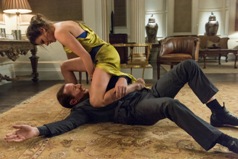 This film was the first project where Christopher didn’t have time to lock down everything he wanted in the score before the recording sessions. Fortunately, there was a great deal of trust between us, so it worked out ok. I knew going in that the shortened schedule on the film was going to mean I’d do some extra work so that Chris would have as many options as possible during the final mix, and he knew that I was ok with him making changes to the music after it was recorded to reflect his ultimate vision for the movie.
This film was the first project where Christopher didn’t have time to lock down everything he wanted in the score before the recording sessions. Fortunately, there was a great deal of trust between us, so it worked out ok. I knew going in that the shortened schedule on the film was going to mean I’d do some extra work so that Chris would have as many options as possible during the final mix, and he knew that I was ok with him making changes to the music after it was recorded to reflect his ultimate vision for the movie. The Vienna sequence was interesting because my score starts when Benji gets off the subway train and plays until the opera starts. Then the opera takes over and plays until the director comes out and stops the orchestra. My score comes back in when we cut to Ilsa in the hallway making her escape. So everything during the catwalk fight, Benji’s brawl in the lighting booth, and the shots at the Chancellor is scored using elements from Turandot. Christopher and Eddie Hamilton, the picture editor, made changes to the opera to more appropriately match certain moments during the sequence. Then the music editor John Finklea worked with orchestrator Matt Dunkley to create a new recording of the opera that would match those changes. For contractual reasons, I was actually not allowed to conduct or orchestrate the sequence, so I was acting in a supervisory capacity.
The Vienna sequence was interesting because my score starts when Benji gets off the subway train and plays until the opera starts. Then the opera takes over and plays until the director comes out and stops the orchestra. My score comes back in when we cut to Ilsa in the hallway making her escape. So everything during the catwalk fight, Benji’s brawl in the lighting booth, and the shots at the Chancellor is scored using elements from Turandot. Christopher and Eddie Hamilton, the picture editor, made changes to the opera to more appropriately match certain moments during the sequence. Then the music editor John Finklea worked with orchestrator Matt Dunkley to create a new recording of the opera that would match those changes. For contractual reasons, I was actually not allowed to conduct or orchestrate the sequence, so I was acting in a supervisory capacity.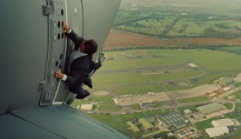 Thank you very much!. I try very hard to make my scores work like a story, so that listening to them away from the film, the listener can follow themes and motifs and experience a story on a musical level. So to be able to intertwine themes like that is to me like writing a good conversation between two characters. I focused very much on creating a melody for Ethan that didn’t sound like the Mission theme, but without the audience realizing it, would work in concert with it, so that at the end, I could superimpose one over the other and surprise them. I’m glad to hear it worked!
Thank you very much!. I try very hard to make my scores work like a story, so that listening to them away from the film, the listener can follow themes and motifs and experience a story on a musical level. So to be able to intertwine themes like that is to me like writing a good conversation between two characters. I focused very much on creating a melody for Ethan that didn’t sound like the Mission theme, but without the audience realizing it, would work in concert with it, so that at the end, I could superimpose one over the other and surprise them. I’m glad to hear it worked!

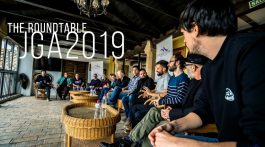
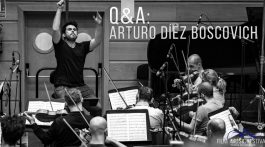
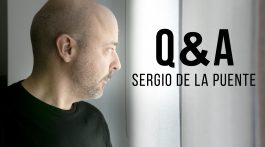
No hay comentarios